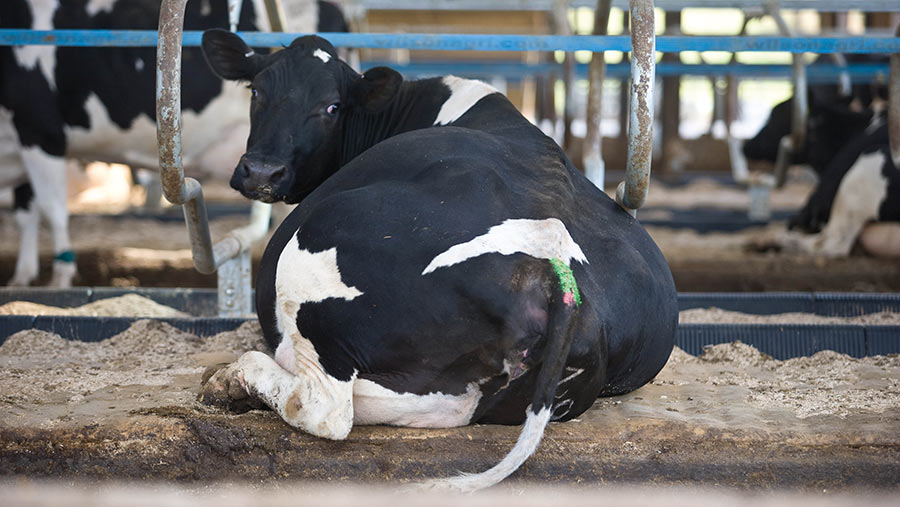Bigger living space for cows improves yields and lying times
 © Tim Scrivener
© Tim Scrivener Providing cows with more “living space” resulted in higher yields and increased lying times in a recent University of Nottingham trial.
Living space was defined as excess space above a baseline and took into account the number of cows in a group, total indoor and outdoor space, number of cubicles, cubicle width and cubicle length.
For example, wide cubicle passages or feed passages would count towards living space if they were above the baseline.
See also: 6 housing tips for better dairy production and welfare
The year-long trial was carried out at the University of Nottingham’s farm to look at the impact of providing more living space.
Cows were split into two groups of 75.
In one group each cow was provided with 3sq m of living space, or 9sq m of total space, which was the average area provided by the farms involved in the initial survey.
The second group had 6.5sq m of living space and 14sq m of total space.
Jake Thomson, research associate at the University of Nottingham and veterinary surgeon, presented the results at the TotalDairy conference 10-11 November 2021.
Results
The results showed the group with access to more space experienced:
- +100-600 litres yield increase. Yields increased across all parities, however, heifers saw the biggest uplift, increasing by about 600 litres a head over a 305-day lactation. Cows increased yields by an average of 100 litres.
- +one hour increase in lying times. On average, cows and heifers lay down for extra hour each day. Dr Thompson attributed this to the cows not needing to wait to access the feed area or cubicles.
- +10-minute increase in feed access. “More subordinate cows were able to access the resources they wanted more easily,” Dr Thompson explains.
However, the time to conception was 33 days more (134 days versus 101 days) with the high living-space group.
Dr Thompson says he is more “conservative” about the possible negative impact on fertility as all other fertility parameters were unaffected.
“When you trade off the milk increase and the fertility decrease in simulation modelling, generally your financial return is always in favour in a high-space group,” he adds.
Farmers can assess their herd’s living space using the University of Nottingham’s Herd Health App
